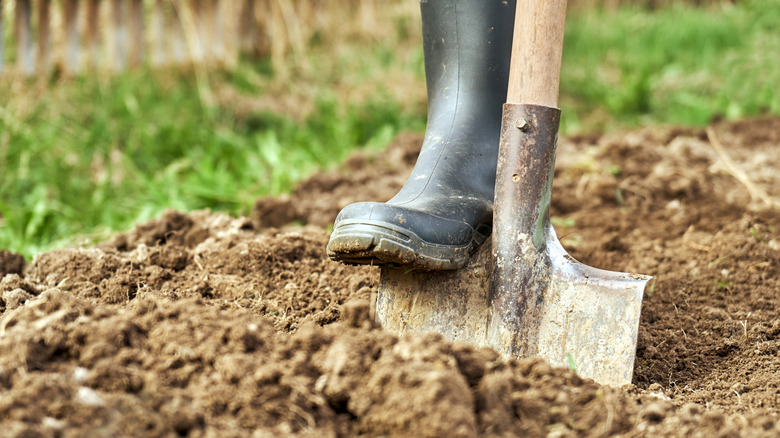A Case For Using Heavy Clay Soil In The Garden (And The Plants That Thrive In It)
We may receive a commission on purchases made from links.
If you live and garden in an area that has soil with a high clay content, you may be surprised to learn that it's not necessarily the detriment you might have thought. In fact, clay soil can actually have some surprising advantages. If you're armed with the right knowledge and know-how, you can turn your clay soil into a fertile, water-saving garden that most plants will thrive in. As it turns out, some of the reasons clay soil gets a bad rap are also what make it favorable for growing.
The types of clay soil are actually not pure clay, but generally consist of 20% to 40% clay content. Even at this percentage of clay, it's challenging to work with. Not only is it heavy and hard to shovel, it's also messy and sticky when wet. Additionally, it can form a compacted top layer making it hard for water, air, and roots to penetrate. These challenges can lead to shallow root systems and potential stress on plants.
But it's not all bad news! Clay is actually more fertile than soil types that trend toward sandy, silty, or loamy. It also holds water better. These two benefits combined mean less overall fertilizing and watering. Clay soil is made up of particles that give it a large surface area and provides lots of space for water in the tiny spaces between the particles. The soil also has a slightly negative charge, which helps it hold onto nutrients. Plants that grow well in clay soils are those that can tolerate poor aeration, temporary waterlogging, and compaction. Examples include coneflower, ornamental grasses, phlox, and rose of Sharon.
How to amend clay soil for best results
For the best results from heavy clay soil, work with it and add garden soil amendments. Any organic matter will work — compost, bark, leaves, grass, manure, and straw are good options. Southside Plants powdered gypsum is another great amendment for clay soil. The main goal is to break up the dirt so that it's less compact, and water and air can flow freely. However, never add sand to clay soil. Adding sand will cause the clay particles to act as a sort of glue, resulting in an even denser soil than you had before.
You don't need to amend all the clay soil in your entire yard or garden at once. Go one area at a time, amending as you plant new items. Simply dig a hole for your plant, mix the soil with your chosen amendments, and fill the hole with the mixture. For larger areas, you can add up to 6 inches of organic matter and work it about a foot into the surface layer, where roots tend to grow. Then, on an annual basis, add another several inches of organic material to the surface of your garden beds.
Not every plant is going to be on board with the clay soil, no matter how much you amend it. Certain ones just require better drainage or coarser soil textures. Some of these plants include lavender, iris, daylilies, cucumbers, and radishes. For these, try planting in containers instead of directly in your garden bed. With a healthy combination of containers and amended garden beds, there's almost nothing you can't grow. Clay all day.

